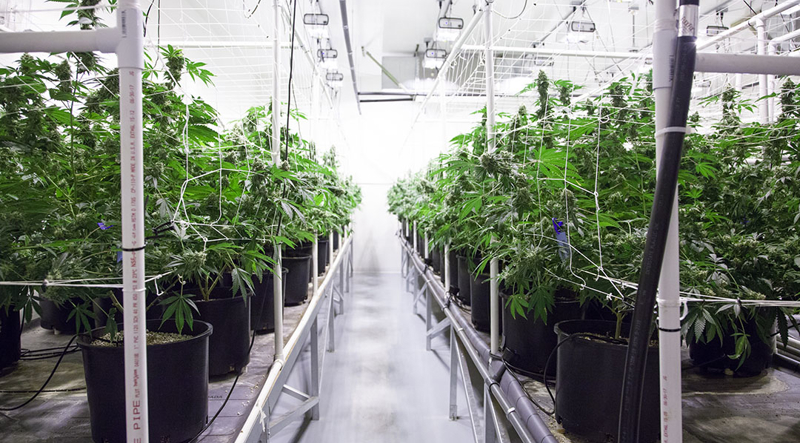When voters in Colorado and Washington gave recreational marijuana the “green” light in 2012, it seemed like nationwide legalization was right around the corner. That hasn’t happened yet, but as of 2022, using marijuana for either recreational or medicinal purposes is legal in 39 states, and it has grown into a $61 billion business.
That may have entrepreneurs and investors drooling at the possibilities. But marijuana is still considered a Schedule 1 controlled substance by the federal government, and even legal states have several legal hoops to jump through to get into the cannabis industry. So, the legal framework can be a difficult hurdle to overcome.
Perhaps the biggest hurdle is a portion of the Internal Revenue Code (IRC) which dictates how businesses can deduct expenses. But a cannabis business, structured properly, can maximize its tax savings. That requires, however, some knowledge of the applicable IRS rules.
The IRS, Section 280E, and the cannabis business
As any established cannabis entrepreneur will know, Section 280E of the Internal Revenue Code prevents cannabis businesses from deducting many common business expenses (or using applicable tax credits) when determining their taxable income. This can result in a crippling federal tax bill. It’s even possible that a cannabis business could lose money and still owe federal taxes. With this in mind, how the cost of goods sold (COGS) is calculated could make or break a profitable business. That’s where Section 471 comes into play.
Section 471: Determining COGS for cannabis businesses
Since cannabis businesses can still deduct COGS when determining their tax liability, how they do so, and what comprises COGS, is critically important.
Regulations under Section 471 of the tax code lay out the framework for calculating COGS, and the IRS says that this Section applies to cannabis businesses. Specifically, it all comes down to a company’s specific business model—whether it’s a producer (grower), or a reseller (distributor, such as a dispensary). Section 1.471-3(b) applies to resellers (distributors), and Section 1.471-3(c) applies to producers (growers).
1.471-3(b) and 1.471-3(c)
Per Section 1.47-3(b), for a distribution business, COGS would amount to what the business pays a producer for the product and the cost of bringing it to the distributor. Other than that, little, if anything else—including payroll, rent, and utilities—would count towards the COGS calculation.
COGS for producers, however, under Section 1.471-3(c), comprises expenses including direct material costs, direct labor, certain overhead costs, insurance, utilities, and other costs necessary for the production of the product. There’s a little more wiggle room.
How to structure a cannabis business for the greatest advantage
With all of this in mind, it can also be extremely important for prospective entrepreneurs in the cannabis space to think ahead about a company’s structure. If you opt for an LLC (the most common choice), there are two common types to consider: Tax-paying entities, and flow-through entities.
Tax-paying entities
The most common tax-paying entity type is a C corporation, which would pay taxes at the federal rate of 21%. Individuals, on the other hand, could pay up to 37%, the highest individual marginal rate. Accordingly, individual owners will not receive a Schedule K-1 form for tax reporting, unless they receive a distribution. On the other hand, those receiving distributions or dividends from the company could face a second level of taxation at rates ranging from 15% to 23.8%.
Flow-through entities
The advantages of flow-through entities include a single taxation level at the individual level—cash distributions are not taxed again. However, taxes become the individual’s responsibility, and rates can be as high as 37%. Plus, individuals will receive an annual K-1 for their share of income related to the company (including all of those non-deductible expenses), which may result in a high taxable income level.
The importance of structuring a cannabis business
With all of this in mind, owners will need to model out the scenarios, consider how expenses and a lack of deductions will affect the owners, and then decide how to structure their companies. Depending on how a business is structured, cash flows and tax liabilities could differ in a big way.
For companies growing and selling? Multiple licenses may be needed, and it may be important to keep those parts of the company separate from one another (create divisions) to operate within section 280E’s limitations.
Co-mingling divisions and finances could lead to the IRS disallowing all deductions across the company, rather than just those subject to certain divisions. And remember, too, that the IRS isn’t going to be shy about auditing cannabis companies, so keeping your books straight is also important.
This may be time and resource-consuming, but given what’s at stake, properly structuring the business and laying the proper groundwork could save you big down the line.
Have a Question?
Fill out the form to speak with one of our experienced cannabis professionals
By submitting this form, you agree to be contacted by UHY.


